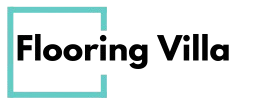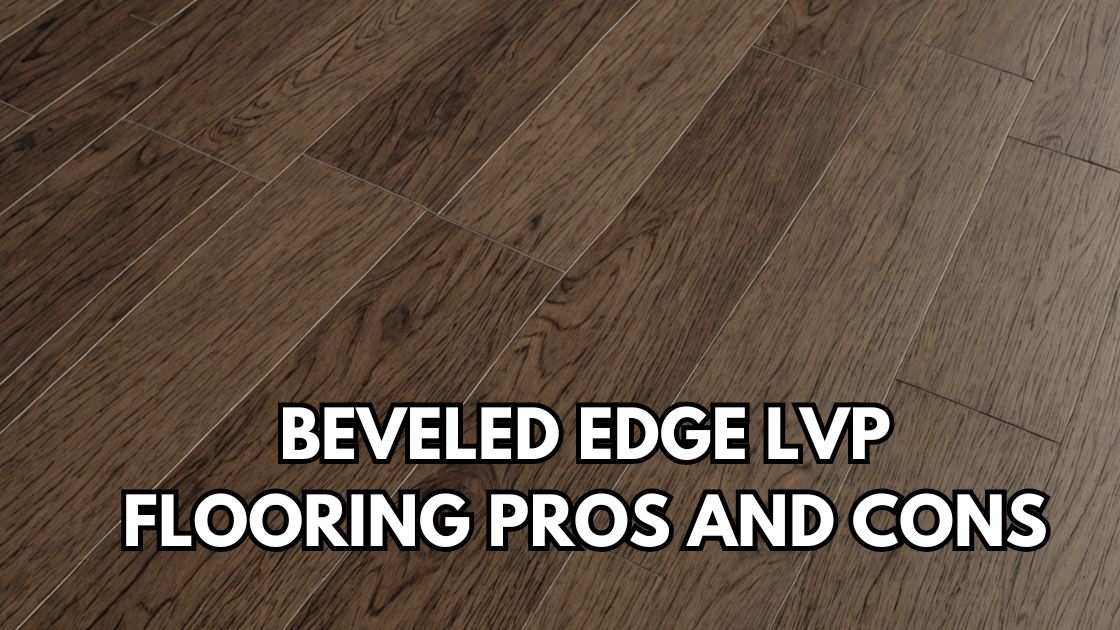Beveled Edge LVP Flooring Pros And Cons
When considering new flooring options, Beveled Edge LVP Flooring Pros and Cons should be at the top of your list. Luxury Vinyl Plank (LVP) flooring has become a popular choice for homeowners looking for a durable and cost-effective solution. The beveled edge design offers a more refined look that can add an extra layer of elegance to your space.
However, like any flooring option, it has its benefits and drawbacks. In this article, we’ll explore the Beveled Edge LVP Flooring Pros and Cons, so you can make an informed decision about whether it’s the right choice for your home.
What Is Beveled Edge LVP Flooring?
Beveled Edge LVP flooring is a type of vinyl flooring designed with planks that have slightly angled edges. The beveling creates a distinct, subtle gap between each plank, making it look more like traditional hardwood. This style is different from the flat-edge LVP planks, which sit flush against each other, providing a more seamless look. The beveled edge gives your floor a more natural, three-dimensional appearance, which can enhance the visual appeal of your space.
Now, let’s dive into the Beveled Edge LVP Flooring Pros and Cons to help you decide if this is the flooring choice for you.
Beveled Edge LVP Flooring Pros and Cons:
| Pros | Cons |
|---|---|
| Aesthetic Appeal: Beveled edges provide a more realistic wood look by mimicking the appearance of natural hardwood planks. | Higher Cost: Beveled edge LVP tends to be more expensive than standard edge LVP due to its added design features. |
| Durability: LVP is highly durable, resistant to scratches, dents, and stains, making it great for high-traffic areas. | Edge Wear: Beveled edges may show wear and tear more quickly compared to square edges, especially in high-traffic areas. |
| Water-Resistant: LVP is waterproof, making it suitable for kitchens, bathrooms, and basements. | More Maintenance: The beveled edges can accumulate dirt and debris in the grooves, requiring more frequent cleaning. |
| Easy Installation: Most beveled edge LVP comes with a click-lock installation system, which makes DIY installation possible. | Can Appear Less Seamless: Beveled edges create visible seams, which may detract from a completely smooth surface. |
| Comfort: LVP is softer underfoot than traditional hardwood or tile, providing more comfort, especially in standing areas. | Not as Authentic as Hardwood: While it mimics wood, LVP may not have the same authentic feel or look as real hardwood flooring. |
| Variety of Styles: Available in a wide range of colors and styles, including wood, stone, and abstract patterns, providing versatile design options. | Can Be Slippery: Some LVP finishes can become slippery when wet, requiring caution, especially in bathrooms or kitchens. |
| Low Maintenance: Easy to clean and maintain with regular sweeping and mopping. | Environmental Impact: LVP is made from synthetic materials and is not as eco-friendly as natural wood or stone options. |
Beveled Edge LVP Flooring Pros
1. Enhanced Aesthetic Appeal
One of the most significant advantages of beveled edge LVP flooring is its aesthetic appeal. The bevels mimic the look of hardwood flooring, giving it a more authentic and sophisticated feel. The slight gap between the planks creates a sense of depth, making your space feel larger and more dynamic. This is especially beneficial for homeowners looking for the beauty of wood without the upkeep.
2. Durability and Resistance
LVP flooring is known for its exceptional durability. It is resistant to scratches, dents, and stains, making it a great choice for high-traffic areas. Beveled edge LVP flooring is no different in this regard, and it can withstand the wear and tear of daily life. Additionally, LVP is waterproof, which is perfect for areas like kitchens, bathrooms, and basements where moisture can be an issue.
3. Ease of Maintenance
Cleaning beveled edge LVP flooring is a breeze. Unlike traditional hardwood floors, LVP requires minimal maintenance. Simply sweep or vacuum regularly, and mop with a damp cloth for a fresh, clean surface. The beveled edges also make it easier to clean along the edges of the planks, preventing dirt from collecting in the gaps.
4. Cost-Effective
Compared to hardwood flooring, beveled edge LVP is much more affordable. Hardwood can be costly both in terms of material and installation, while LVP provides a similar aesthetic at a fraction of the price. Beveled edge LVP is an excellent choice for those who want the look of hardwood without the hefty price tag.
5. Quick and Easy Installation
LVP flooring, including beveled edge planks, is typically designed for DIY installation. Many beveled edge LVP options feature a click-lock installation system, meaning you can install the planks without the need for glue or nails. This can save you both time and money on installation costs.
Beveled Edge LVP Flooring Cons
1. Visible Seams
While the beveled edges enhance the aesthetic, they can also create visible seams between the planks. If your flooring is not installed perfectly, these seams can become more noticeable over time. Additionally, dust, dirt, and moisture can accumulate in the gaps, which could lead to cleaning challenges if not properly maintained.
2. Not As Resilient As Hardwood
Although beveled edge LVP flooring is durable, it doesn’t quite match the longevity of real hardwood. While LVP can withstand moisture and scratches better than hardwood, it can be damaged by heavy impacts, such as dropping a heavy object. Over time, the bevels may wear down, which can make the floor look less appealing.
3. Potential for Fading
Like all vinyl flooring, beveled edge LVP can be prone to fading when exposed to direct sunlight for prolonged periods. UV rays can cause the color of the floor to degrade over time. To avoid this, you might need to use rugs or window coverings to protect your floor from sun damage.
4. Limited Resale Value
While LVP flooring offers many practical benefits, it may not add as much value to your home as hardwood floors would. Potential buyers may prefer the real wood aesthetic, especially if they are used to traditional materials. This could be a concern if you’re planning to sell your home soon after installing the floor.
5. Lower Sound Insulation
Despite the durability and appearance, beveled edge LVP flooring doesn’t offer the same sound insulation properties as carpet or cork. While LVP can be installed with an underlayment that reduces noise, it still tends to be noisier underfoot compared to other flooring types. This can be a consideration if you’re looking for a quieter, more soundproof environment.
Final Thoughts on Beveled Edge LVP Flooring Pros and Cons
When weighing the Beveled Edge LVP Flooring Pros and Cons, it’s essential to consider both the aesthetic and functional benefits. This flooring option offers a beautiful, cost-effective alternative to hardwood with the added benefits of durability, low maintenance, and water resistance. However, it does have some downsides, such as visible seams and the potential for fading. If you’re looking for a balance of beauty, durability, and value, beveled edge LVP could be the perfect fit for your home.
Before making your final decision, think about your specific needs and preferences. Whether you’re renovating a single room or completing an entire home, Beveled Edge LVP Flooring Pros and Cons can help you determine whether this versatile flooring solution meets your style and lifestyle requirements.










